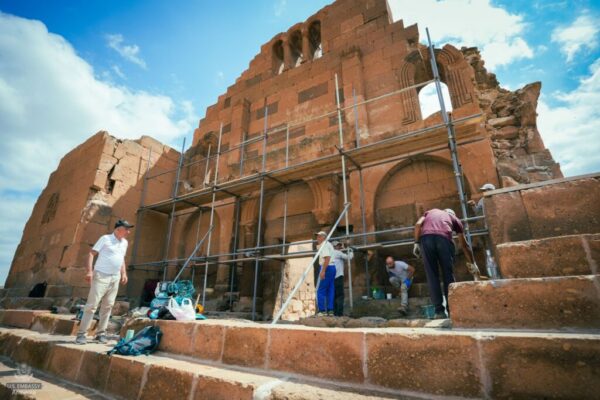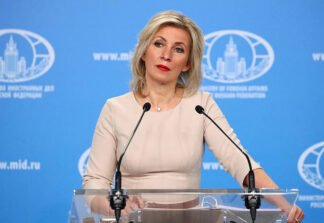YEREVAN (Public Radio of Armenia) — The US Embassy will provide $74,000 through the Ambassador’s Fund for Cultural Preservation to the Matenadaran – the Mesrop Mashtots Institute of Ancient Manuscripts – for preservation of rare manuscripts and archival documents produced in ancient Armenian monasteries in Nagorno-Karabakh.
US Ambassador to Armenia Kristina Kvien made the announcement during a visit to Yereruyk Basilica in Armenia’s Shirak region this week.

Kvien, along with Minister of Education, Science, Culture, and Sport Zhanna Andreasyan, officials, and representatives of the Shirak region and Anipemza community, visited and toured the historic site of Yereruyk Basilica. This significant event underscored the United States’ commitment to supporting the preservation and restoration of Armenia’s rich cultural heritage, through the $175,000 investment from the U.S. Ambassador’s Fund for Cultural Preservation to conserve this magnificent monument. “Our collaboration in cultural preservation highlights the strong partnership between our nations. Together, we are preserving history and fostering mutual understanding and respect,” said Kvien.
Yereruyk, an ancient basilica dating back to the 4th-5th centuries, stands as a testament to Armenia’s early Christian architecture and historical significance. The site, which has faced challenges due to natural and human factors, is a focal point for preservation efforts aimed at safeguarding Armenia’s cultural legacy for future generations.
While in Yereruyk, Kvien announced an award of $74,000 — through the Ambassadors Fund for Cultural Preservation — to the “Matenadaran” Mesrop Mashtots Institute of Ancient Manuscripts for preservation of rare manuscripts and archival documents produced in ancient Armenian monasteries in Nagorno-Karabakh.
Through the Ambassadors Fund, the U.S. Embassy in Yerevan has provided $1.6 million in funding to support 15 conservation projects since 2005. The Yereruyk initiative includes the fortification of the monument’s walls, replacement of eroded stones, installation of a drainage system to reroute water, improvement of the monument environment, and its preparation as an area for the exhibition of the existing monumental stones.









